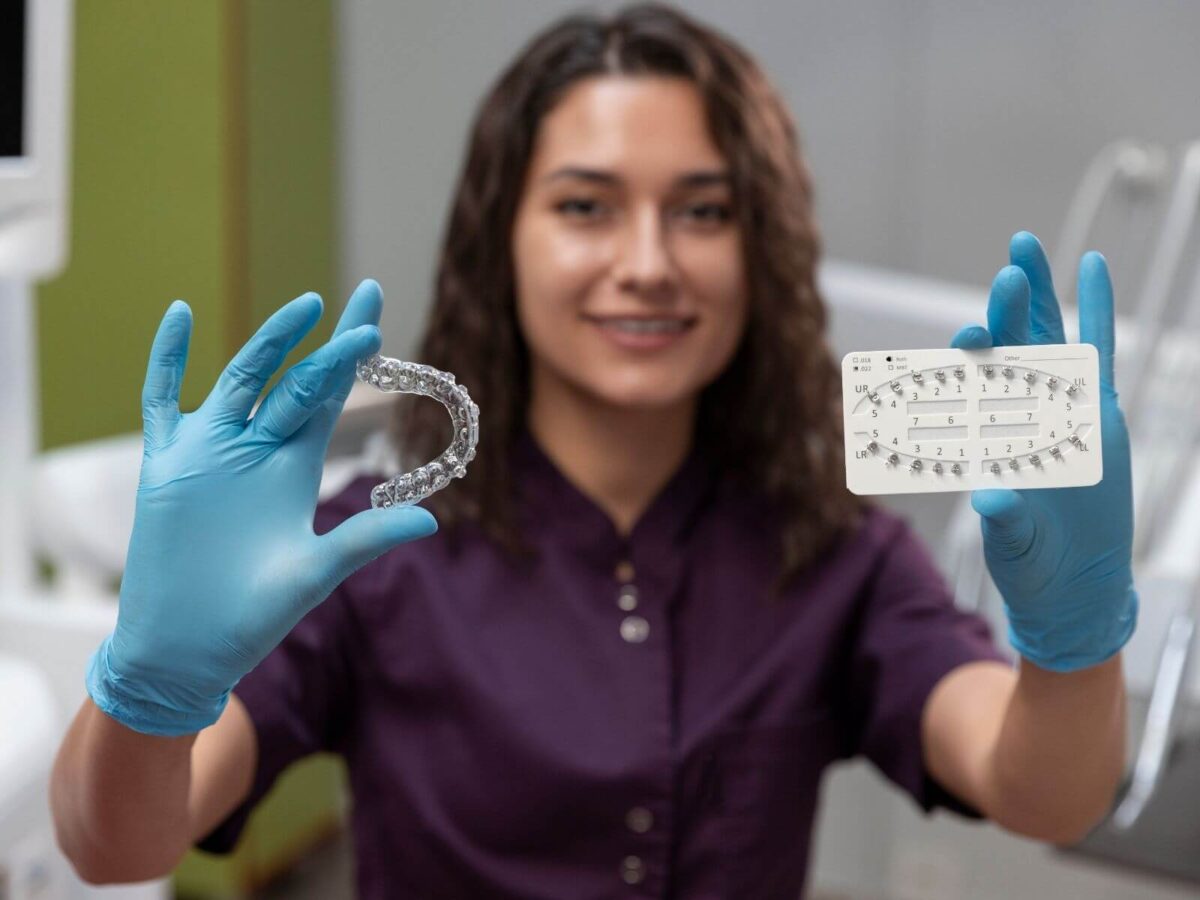Blog
Dental hygiene tips for healthy teeth & gums

How Does Invisalign Work To Straighten Teeth?
A common fable about Invisalign is that it best suits people with slightly misaligned teeth. However, Invisalign is more than only a retainer; it’s designed to align teeth irrespective of the degree of misalignment.
In some cases, extreme misalignment may require braces, especially if the issue stems from unusual jaw positioning. Nonetheless, Invisalign remains a remarkable option for achieving flawlessly aligned teeth.
What Is Invisalign?
In line with its call, Invisalign is an almost invisible aligner of teeth inside the shape of retainers. You get clean, detachable, and comfortable to-wear trays that fit over your teeth.
The transparent part of the trays is made out of BPA-unfastened plastic. And sure, it appears fairly clean, so humans cannot tell you you are carrying Invisalign trays! This is why most adults and teens select Invisalign over ordinary braces.
The trays also are produced from a 3-dimensional photo of your mouth. This means that the teeth will be within the proper function through the efforts of the aligners. However, during this remedy, you will be required to fill up the trays within some weeks, depending on the severity of the case.
How Precisely Does Invisalign Clear Aligner Paintings?
Invisalign clean aligners apply mild, managed force to move an affected person’s teeth into the desired position. When orthodontic treatment is needed, the clinician designs a sequence of custom aligners that fit snugly over the higher and/or lower teeth. These aligners progressively shift the enamel by applying consistent pressure, with every set worn for about weeks before moving to the next. As with any orthodontic treatment, Invisalign clear aligners undergo crucial levels of ordinary look-at-ups to make certain developments and adjustments.
Determining Candidacy
The first stage of the Invisalign treatment is an initial visit to an orthodontist’s office. In this visit, the orthodontist assesses the patient’s teeth and sometimes takes dental X-rays to check if the clear, removable appliances are suitable. Given the necessity of wearing the aligners full-time and the patience it takes, Invisalign is usually appropriate only for older adolescents or adults.
There are several issues that this treatment can potentially address:
- Orthodontic treatment of a Class I, Class II, Class III, or anterior open bite.
- Overcrowding problems.
- Closing gaps in the teeth
- Straightening crooked teeth
Creating a Treatment Plan
If the patient is appropriate for Invisalign, the orthodontist maps out a course of how the teeth must be moved. Attachments or rubber bands may be required to get the desired outcome. More often, 3D images are used to make custom-made trays specifically made to move the teeth and jaws slowly.
Wearing Invisalign
After the process, clear aligners, known as Invisalign trays, are provided to the patient, along with proper usage instructions. They are arranged in a week pack and marked. For the aligners to work as intended, a patient must wear them for at least 22 hours daily. Removal is only allowed when eating or brushing teeth. Patients should brush their teeth at least twice daily as suggested.
Attending Checkups
Even though Invisalign usually requires fewer visits to the orthodontist than traditional braces, checkups may be necessary every six to 10 weeks to assess progress. If the aligners are not being worn correctly, the teeth will move, and a new set of aligners may have to be created. Despite this, the orthodontist may add or remove components — wires or pieces — during the process.
Maintaining Results
Depending on the patient’s situation and treatment response, the process involves wearing between 20 to 50 sets of trays. Sometimes, the orthodontist checks the progress of the mouth and determines that there is still some tweaking that can be done, and the patient has to wear three to five additional sets of trays. In other cases, the ideal position is achieved, and the patient is provided with a plastic retainer to maintain the new smile properly.
How Long Does Invisalign Take To Work?
The length of your remedy varies depending on numerous elements, along with the state of your chew and how complicated your teeth want to be aligned. The treatment may take roughly one year and a half for adult patients. Aligners must always be worn for about 20 to 22 hours each day, until the completion of treatment. The efficacy of the results relies upon strict adherence to this advice.
How Much Does Invisalign Cost?
The general cost of Invisalign depends on the treatment period, the complexity of the case, and the doctor practicing. But it tends to be in the same range as that for traditional braces, sometimes slightly more.
The average cup can cost 5,000 US dollars. However, an essential Invisalign treatment is even cheaper than the above. The prices are calculated based on several parameters, and that price increases with the level of deterioration of the teeth. Your dental insurance will also contribute part of what you need for treatment.
The Effects of Invisalign Braces
Unsurprisingly, the expected outcome of Invisalign treatment will depend on how misaligned your teeth are and how loyal you are to the aligners.
Other dental problems, such as spacing between the teeth, deep and complete bites, crowding, and crossbites, are also corrected with Invisalign. Previously, many of these complexities were corrected effectively with metal braces for dental patients.
However, as Invisalign technology develops, the capability to achieve better outcomes similar to those of metal braces becomes invaluable.
Conclusion: Do You Need an Invisalign Dentist?
As you know by now, getting Invisalign is a great opportunity to have beautiful teeth quickly. But to maximize the benefits of your treatment you need an orthodontist you can trust. Get in contact with Liberty Dentist TX to get more information about Invisalign.


